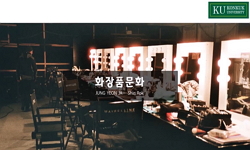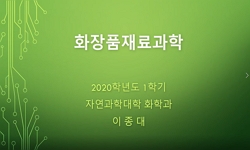In the Old Joseon Period, there are tombs such as the stone cist, the dolmen, the stone mound tomb and the catacomb. The catacombs are mainly excavated in the upper district of the Taizihe river. The culture of its area is peculiar and it is called as...
http://chineseinput.net/에서 pinyin(병음)방식으로 중국어를 변환할 수 있습니다.
변환된 중국어를 복사하여 사용하시면 됩니다.
- 中文 을 입력하시려면 zhongwen을 입력하시고 space를누르시면됩니다.
- 北京 을 입력하시려면 beijing을 입력하시고 space를 누르시면 됩니다.
https://www.riss.kr/link?id=A82681306
- 저자
- 발행기관
- 학술지명
- 권호사항
-
발행연도
2009
-
작성언어
-
-
주제어
고조선 ; 마성자문화 ; 장제 ; 미송리형 토기 ; 화장 ; Old Joseon ; Machengzi culture ; methods of burial ; Misongni type pottery ; cremation
-
KDC
900
-
등재정보
KCI등재
-
자료형태
학술저널
-
수록면
67-90(24쪽)
- 제공처
-
0
상세조회 -
0
다운로드
부가정보
다국어 초록 (Multilingual Abstract)
Among the catacombs, the grave pit No. 42 in the Zhangjiapucan A cave is the wood lined tomb. This type of tomb is also found in dolmen. Considering the fact that many wood lined tombs are constructed in the second half of the Bronze Age, we can assume that the tombs of the Bronze Age are originated from those of the Old Joseon.
The methods of burial like the extended burial, the flexed burial, the prone burial and the side burial in the Old Joseon Period are used. It is a unique burial custom of the Old Joseon that most corpses are cremated. The tombs among the multiple burials tomb expected to be seen as a mother-child relationship are excavated in the No.2, No.7, No.8, No.12, No.31 Zhangjiapucan caves and in the No.8 Machengzi C cave.
A great number of potteries and stone implements used in daily lives are excavated in the catacomb. These are incomparably more than those of the dolmen and the stone cist. It is also a peculiar burial custom of the Old Joseon Period that the mortuary gifts and animal bones are excavated in the catacomb.
In the Old Joseon Period, there are tombs such as the stone cist, the dolmen, the stone mound tomb and the catacomb. The catacombs are mainly excavated in the upper district of the Taizihe river. The culture of its area is peculiar and it is called as Machengzi culture. Machengzi culture has an important role in understanding the territory and center of the Old Joseon.
Among the catacombs, the grave pit No. 42 in the Zhangjiapucan A cave is the wood lined tomb. This type of tomb is also found in dolmen. Considering the fact that many wood lined tombs are constructed in the second half of the Bronze Age, we can assume that the tombs of the Bronze Age are originated from those of the Old Joseon.
The methods of burial like the extended burial, the flexed burial, the prone burial and the side burial in the Old Joseon Period are used. It is a unique burial custom of the Old Joseon that most corpses are cremated. The tombs among the multiple burials tomb expected to be seen as a mother-child relationship are excavated in the No.2, No.7, No.8, No.12, No.31 Zhangjiapucan caves and in the No.8 Machengzi C cave.
A great number of potteries and stone implements used in daily lives are excavated in the catacomb. These are incomparably more than those of the dolmen and the stone cist. It is also a peculiar burial custom of the Old Joseon Period that the mortuary gifts and animal bones are excavated in the catacomb.
목차 (Table of Contents)
- Ⅰ. 머리말
- Ⅱ. 마성자문화의 성격
- Ⅲ. 무덤방과 장제
- Ⅳ. 껴묻거리 문제
- Ⅴ. 맺음말
- Ⅰ. 머리말
- Ⅱ. 마성자문화의 성격
- Ⅲ. 무덤방과 장제
- Ⅳ. 껴묻거리 문제
- Ⅴ. 맺음말
- [Abstract]
동일학술지(권/호) 다른 논문
-
식민지 및 보호령 제도에 관한 프랑스 국제법 학자들의 견해
- 백산학회
- 이석우(Lee, Seok-Woo)
- 2009
- KCI등재
-
- 백산학회
- 李宗勳(Lee, Jong-Hoon)
- 2009
- KCI등재
-
- 백산학회
- 이종수(Lee, Jong-Su)
- 2009
- KCI등재
-
- 백산학회
- 李道學(Lee, Do-Hack)
- 2009
- KCI등재





 스콜라
스콜라






